As promised, I didn’t update last month because I was busy being 9 months pregnant. On February 3rd, my daughter Severina was born, a little late but in good health! In the ensuing weeks, I’ve been busy trying to learn how to do this whole “mom” thing, and just generally enjoying her presence. She sleeps a lot, of course, so I’ve had a chance to get a little reading done as I ease back into work, on top of the reading I got done before she arrived. That means this is a longer “favorites” post than usual — a nice challenge for me as I get back into the groove of writing!
I’m also trying something new this month. I’ve become an affiliate of Bookshop.org, a website that is seeking to redirect some of Amazon’s book sale profits to independent bookstores. I try not to preach too much, but I have serious concerns about Amazon’s affect on the publishing industry, so I’m glad to be able to provide an alternative option to readers. Full disclosure: If you order books through my links, I will get a percentage of that sale. I am obviously very grateful if you do choose to do that — but I would also encourage you to try to do more of your book shopping through the website itself when you can’t get to your local independent bookstore or comic shop, regardless of whether it kicks back to me or not. It will benefit other affiliate bookstores and folks in the world of book retail and reviewing.

What’s Michael? Fat Cat Collection, Volume 1, by Makoto Kobayashi — published by Dark Horse Comics
Those of you who follow me on Twitter will likely have seen some of my ravings about What’s Michael? in the past, and will know that I’m a huge lover of cats. This hilarious series is about the quirks of cats, as shown through Michael, a sort of stand-in for all orange tabbies everywhere, and his cat companions. This is also, however, a series about the quirks of cat lovers; frequently the human characters are depicted as going above and beyond what seems reasonable in favor of providing the best for their cats. My personal favorite recurring characters are the yakuza member known as K who doesn’t want anyone to know that he keeps and dotes on a cat, and his rival yakuza member M who doesn’t want anyone to know that he is horribly afraid of cats. Each man is worried about shattering his manly image, you see. Makoto Kobayashi seems to enjoy the incongruity of stereotypically masculine men loving cats, and it is clear from his keen observation that he himself is a great lover of felines. Dark Horse had originally published this series in smaller volumes back in the 90s, and I’m really, really excited that they’re bringing it back in this “fatcat” edition for a new wave of cat-loving readers!
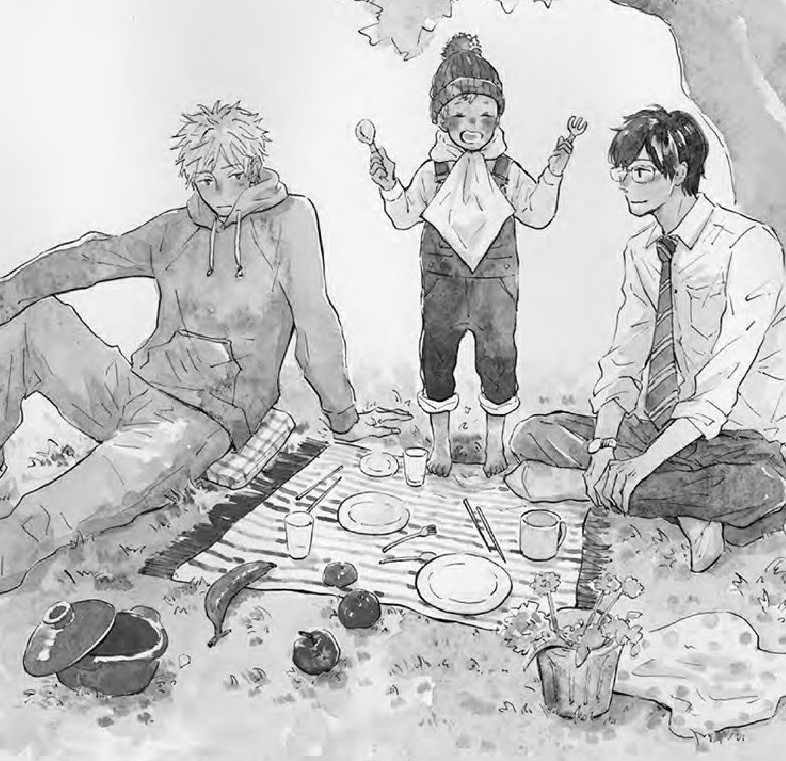
Our Dining Table, by Mita Ori — published by Seven Seas Entertainment
I read a lot of BL, and the majority of it is…not great, honestly. I wade through a lot of excessive drama seeking out romances that are sweet, or comforting, or just plain pleasant. Luckily, those kinds of BL are becoming easier to find, and I would count Our Dining Table among them — though honestly, the romance is more of a bonus than a feature in this cozy food manga. Yutaka is a salaryman who has trouble eating around others. One day, he intercepts the young Tane, a little boy with a big appetite who becomes obsessed with Yutaka’s homemade onigiri. Through Tane, Yutaka meets Minoru, his older brother, and the three fall into a pattern of sharing meals together regularly. Obviously a romance buds between Yutaka and Minoru, but the real draw is the focus on shared meals — regardless of their quality — as a vehicle for creating familial bonds. As someone who grew up in an Italian household (and who loves food), this idea of sharing meals as a family is really important to me. I loved to see it utilized in a “found family” narrative, highlighting the importance of nourishing each other physically and emotionally.
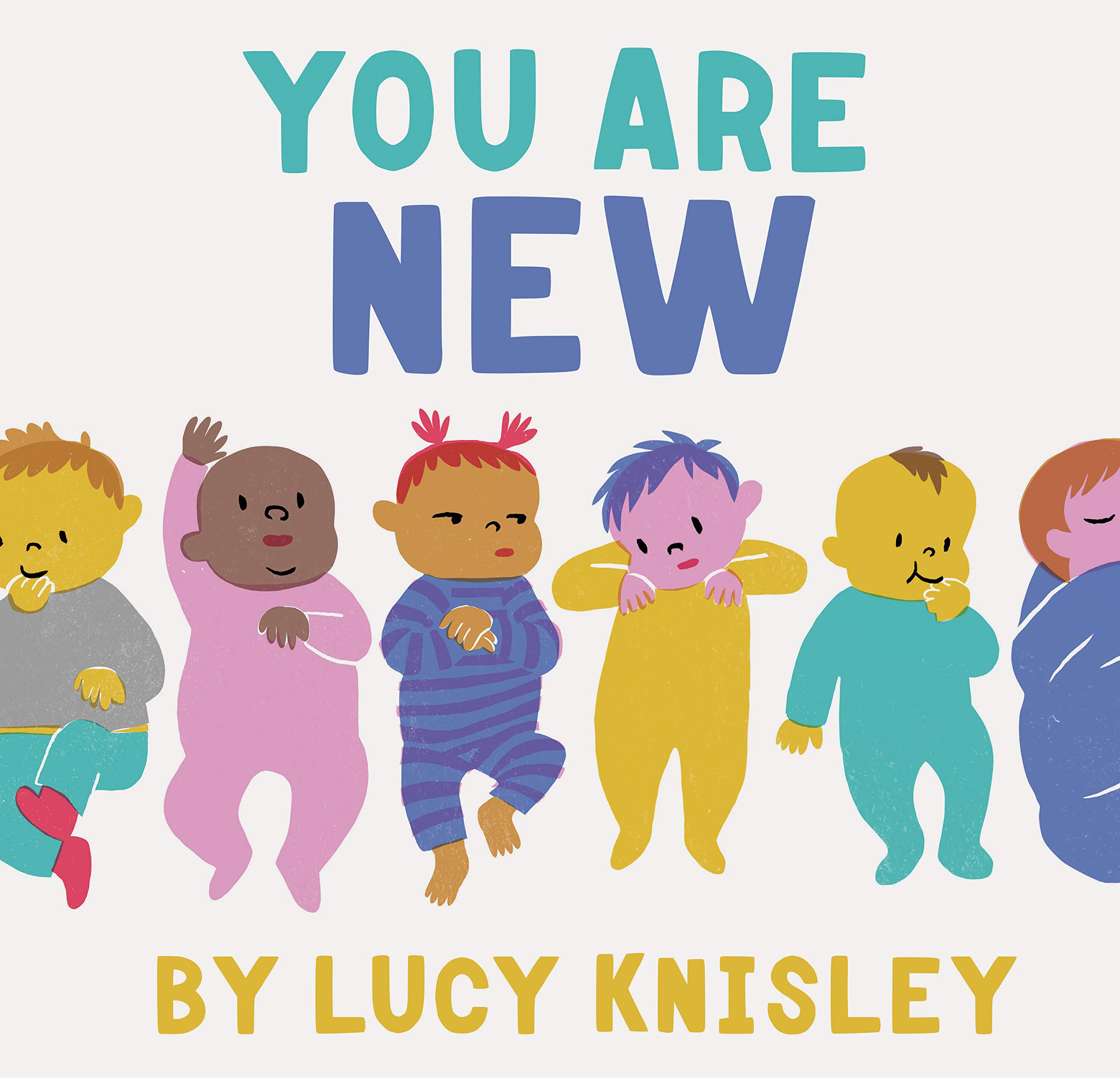
You Are New, by Lucy Knisley — published by Chronicle Books
Okay, I’m cheating a bit here. You Are New is actually a picture book that I bought for my daughter before she was born. But I’m including it here because it is another in an ever-growing collection of works by cartoonist Lucy Knisley about…well, babies. I haven’t forgotten my promise to write a piece about pregnancy and parenthood in comics, and I’m slowly accruing a small horde of books and links to use to that end. Knisley keeps churning out content that simply demands to be part of that future post! In this case, she speaks directly to children instead of parents, assuring them that their newness — whether it’s because they were just born or because they are meeting new people or whatever the case may be — is a wonderful gift of growth and change. We are constantly in the process of reinventing ourselves day to day, and none moreso than children. I’ve read this to Severina a few times now, both before and since she was born. Soon, she’ll be able to appreciate the lovely, bright illustrations that depict kids of all ages and backgrounds. Until then, well…she’s still very new!
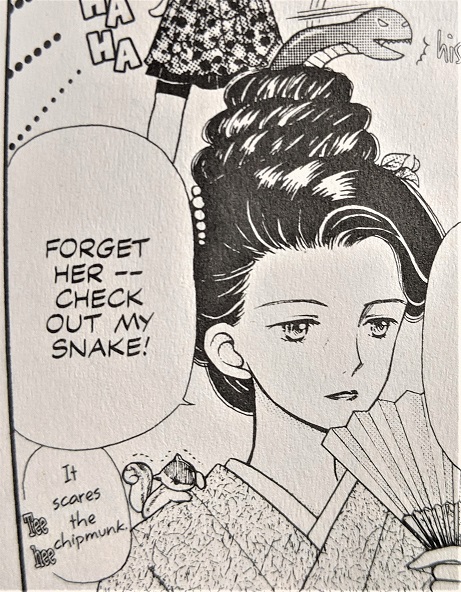
Kodocha, Volume 1, by Miho Obana — published by Tokyopop (out of print)
This also feels a bit like cheating, since this is actually a reread — though I first read this manga in 8th grade, about seventeen or so years ago! I have a soft spot for “old” shojo (stuff from the 90s and early 00s, basically), and on a whim realized that I wanted to revisit this series, which is so good at balancing absurd, slapsticky humor with intense, soap opera-style drama. Protagonist Sana is a famous actress, and she’s having trouble at school with a bully named Akito. As she tries to fight back against his classroom tyranny, she learns about his tragic past and is spurred to help his family overcome their issues through her performance in a movie that closely mirrors their experiences. It sounds trite, and perhaps in some ways it is…but there’s something so appealing about the characters that I find myself drawn in, anyway. Maybe it’s the nostalgia talking, but if you can find old copies of Kodocha at your library or used somewhere, I do recommend checking it out, especially if you remember the good old bad days of North American manga publishing.
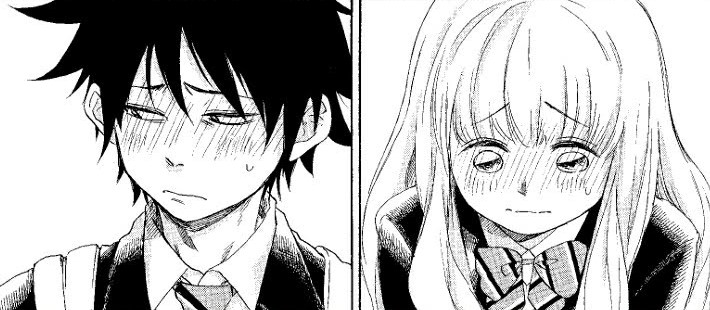
Blue Flag, Volume 1, by KAITO — published by VIZ Media (available April 21, 2020)
This is one of those series around which there’s been a lot of buzz, so I was really excited to see it getting a print release through VIZ this year. In many ways, Blue Flag seems like a straightforward high school drama revolving around an uncomfortable love triangle. Protagonist Taichi is entering his final year of high school, and discovers that he’s in the same class as his childhood friend, Toma. While Toma doesn’t seem to think anything between them has changed, Taichi feels that Toma’s popularity and good-naturedness separate them, and he doesn’t really considering Toma a close friend. He happens to discover that a timid girl in his class, Futaba Kuze, has a crush on Toma. She asks for Taichi’s help to get Toma’s attention — and complications ensue. The three get along well, but Toma is hiding his real feelings about his own affections, and Taichi suddenly feels far more attached to Kuze than he anticipated, especially considering he rather disliked her at the outset of the manga. I had never read anything by KAITO before, but his artwork is absolutely lovely, and he manages to keep a high school love triangle (one of my least favorite tropes) interesting through genuinely likable characters. So far, there’s no overly-dramatic backstabbing or eyeroll-worthy declarations of romantic intention. And besides, there’s an LGBTQ+ angle here as well, and I’m curious to see how that’s handled in future volumes.
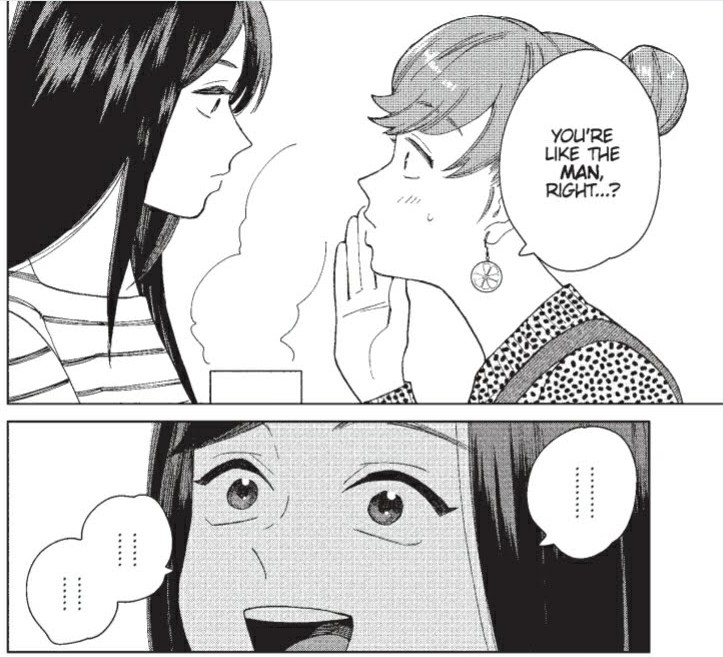
My Androgynous Boyfriend, Volume 1, by Tamekou — published by Seven Seas Entertainment
Upon seeing my Goodreads rating of this volume, a friend with whom I didn’t think I had much discussed my love of androgynous men commented, “Oh brand.” And truly, this is a very on brand manga for me in so many ways. Wako is a hard-working manga editor who isn’t terribly interested in her own appearance, but who loves cute and beautiful things. This affection extends to her boyfriend, the fashionable and feminine Meguru. This unlikely couple loves each other fiercely, and the story mainly revolves around the misconceptions others have about their sexualities (since some people assume Meguru is a woman, or that he is gay). So far, even though Wako and Meguru both deal with some struggles in their professional and personal lives, this is a series without any malice. These two lovebirds are happy with each other, and they work hard to maintain their relationship with a great deal of mutual respect and admiration. The first volume was simply relaxing and enjoyable to read, and I look forward to seeing what future volumes have in store.
Well, there’s two months’ worth of recommendations for you, dear readers! I’ll be getting back to reviewing for Comics Beat soon, too, so continue to look for my long-form reviews there. Much as the time away has been nice (and brief!), I’m looking forward to diving headlong back into manga writing, as well as my other work. It’s important to keep the mind active, even when caring for a child! At the very least, I’ll be back again next month for another favorites post, so keep an eye out for it.
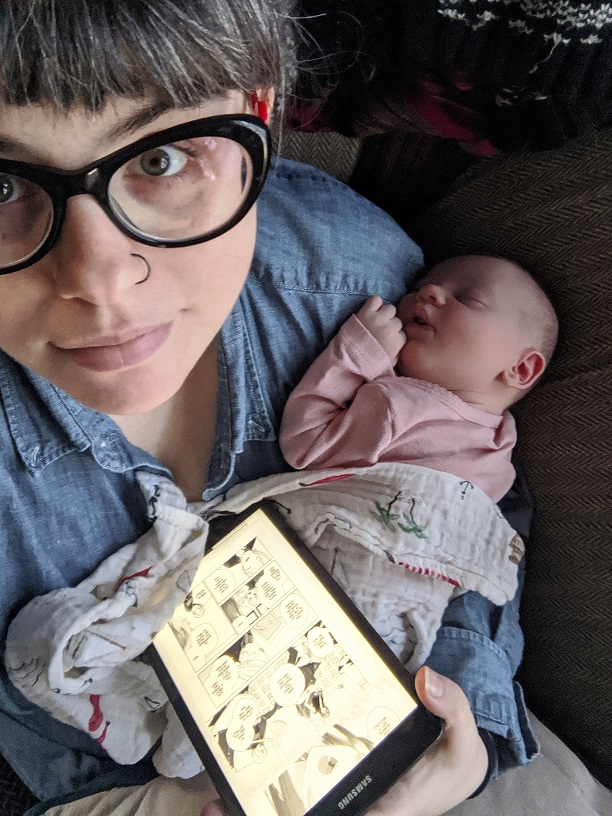
LGBTQ
May Favorites
As I’m writing this, I’m gearing to move out of my apartment and into a new, slightly bigger one (the better to accommodate my ever-increasing manga collection, right?), and I’m surrounded by boxes and boxes of my stuff. There’s nothing that makes you want to consider a life of asceticism quite like moving. May has been very much a transitional month for me, in more ways than just a change of address.
I already wrote a little bit about my adventures at TCAF. That sojourn sparked a lot of excitement and motivation within me, so hopefully I’ll be stepping up on my manga writing even more in the aftermath — gotta ride that wave of inspiration for as long as possible!
And something I haven’t mentioned yet is that I have contributed a short piece on manga basics to the upcoming CBLDF Presents Selling Comics: The Guide to Retailing and Best Practices in the Greatest Modern Art Form. I am so, so excited to have been asked to do this; about six years ago, CBLDF and Dark Horse collaborated on a similar book all about manga that featured writing from many intelligent, excellent writers whom I greatly admire. And since I have a lot of strong feelings about comics retail and selling manga in particular, this felt like an excellent first foray into comics print publication for me.
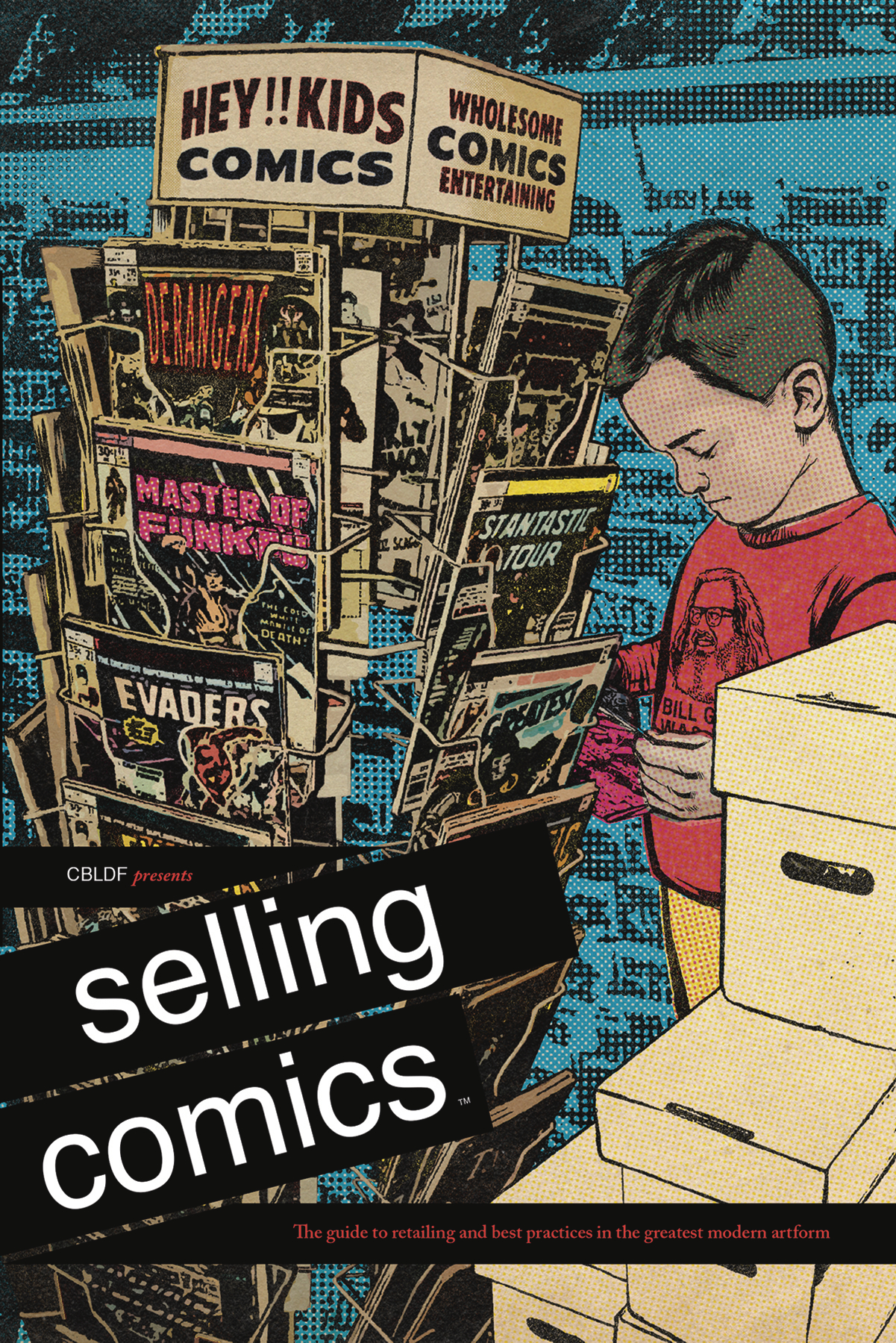
In between all the travel and writing, I did get a chance to read some really excellent books of all stripes. As usual, it’s time for me to highlight my favorite comics for the month!
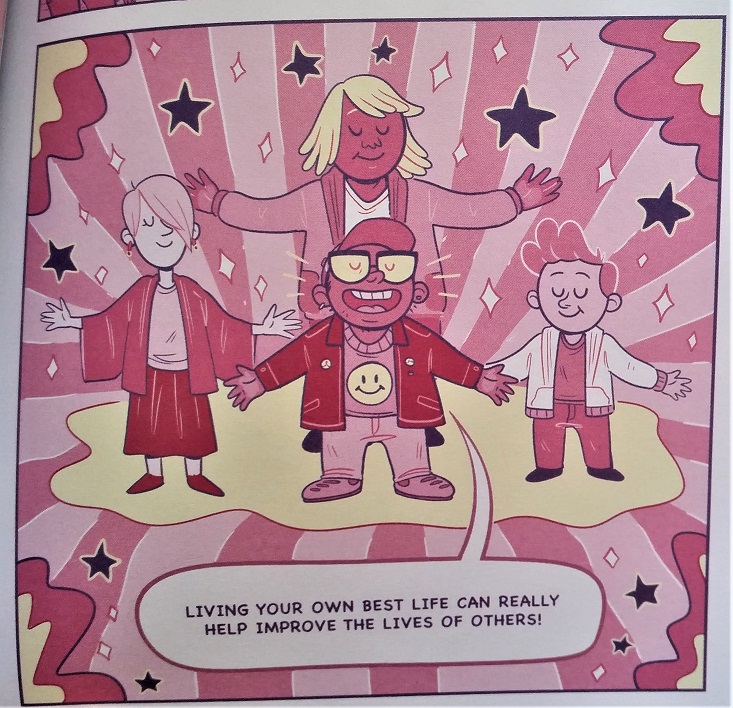
A Quick & Easy Guide to Queer & Trans Identities, by Mady G & J.R. Zuckerberg — published by Limerence Press
Last year, Oni Press’s Limerence imprint published A Quick & Easy Guide to They/Them Pronouns, which I thought was absolutely excellent, and I was gratified that we sold a ton of copies at Comicopia. With its friendly, non-judgmental tone and low price point, it was a really nice, gentle introduction to the topic of non-binary genders for people of all backgrounds. And so, I was very excited when Queer & Trans Identities was announced. It’s slightly less auto-biographical, but equally kind in its delivery with the added bonus of covering a lot of ground succinctly. There are two “stories” going on at the same time: A snail is teaching other snails all about different human identities and expressions, and a fantasy world populated by “sproutlings” shows the identity progression of one of its citizens. The artwork is adorable, bright, and fun, and the back matter encourages readers to create their own “sprout-sona” and design matching friendship jackets. I think what I enjoyed most about this guide was its dedication to inclusivity, and its patient guidance through myriad identities and sexualities — and a wonderful chapter on forging healthy, caring relationships that everyone, regardless of gender or sexuality, could use. I think this is a wonderful addendum to any coming-of-age talk that a parent or teacher might have with a young person, and it provides resources for further research as well. Growing up, I had to figure out my own ideas of gender and sexuality without the guidance of any adult queer person, and even though I have no real regrets or concerns about my own path, I think this is an endlessly valuable guide that I and my peers could have really benefited from.
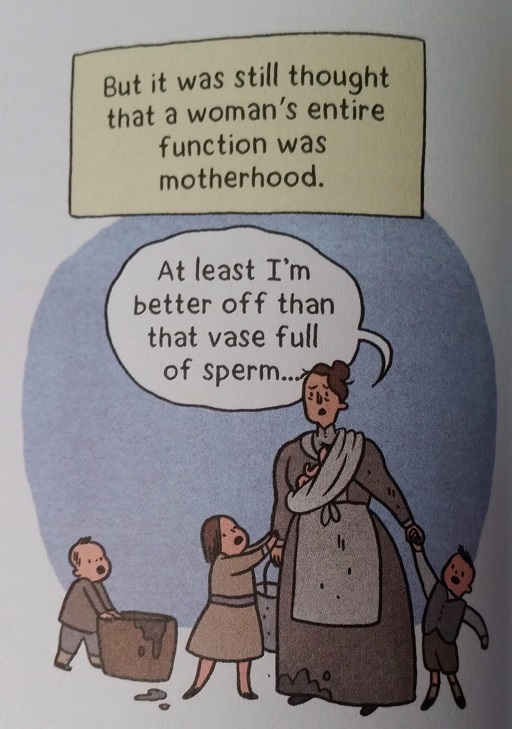
Kid Gloves: Nine Months of Careful Chaos, by Lucy Knisley — published by FirstSecond
It is a really, really scary time to be a person with a uterus in the United States right now. Abortion rights are being overturned state by state, causing people like me — even those of us who want to get pregnant and have children! — to worry about our autonomy and our value in the eyes of the law. So it was a really interesting time to decide to read Lucy Knisley’s autobiographical account of her very high-risk pregnancy — a book I had been patiently waiting to read since it came out, but scores of people already had on hold at my local library. This was actually the first of Knisley’s books I’ve ever read, though I do follow her avidly on Instagram, and it was worth the wait.
From the time most girls are born, there is an emphasis on them becoming mothers, whether intentionally or by accident. There is a lot of burden placed on girls and women to have babies and also to prevent them, lest they be marked “fast” or “easy.” But what I think doesn’t get talked about quite enough is how complicated and often dangerous pregnancy is — or how little control a pregnant person has over what happens to their body and their baby, in the grand scheme of things. So I appreciated Knisley’s openness about her two miscarriages, her extraordinary battle with constant morning sickness, and her concerns about pre-eclampsia that went unaddressed by her doctor. All these deeply personal and evocative anecdotes are peppered with chapters on the history of pregnancy and gynecological medicine, which is a personal interest of mine anyway (I love the Sawbones podcast!). And though she struggled so fiercely through her pregnancy, it is so clear how much she loves her son, how grateful she is for his presence in her life. This is an excellent read for our times, a good reminder that pregnancy and motherhood should never be forced upon a person, that it is a great risk and a great responsibility.
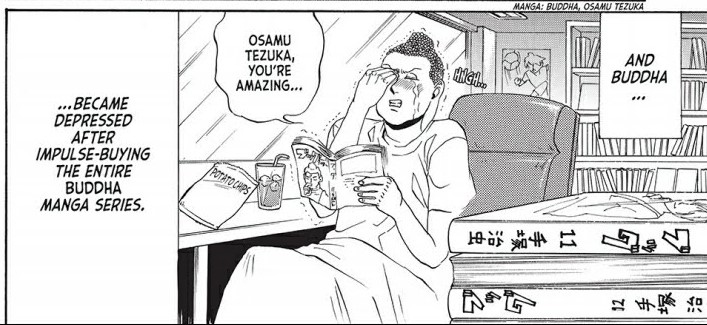
Saint Young Men, Volume 1, by Hikaru Nakamura — published by Kodansha (digital only)
I feel as though I’ve been waiting for this manga all my life. It’s commonly known that mangaka Hikaru Nakamura has been hesitant for Saint Young Men to have an English-language release, for fear that it might stir up some religious controversy. But as a proudly lapsed Catholic, I am ecstatic that it has finally made it Stateside. I am a huge fan of religious comedies; my favorite novel is Terry Pratchett and Neil Gaiman’s Good Omens, and Dogma is pretty high up on my list of favorite films. So the premise of Jesus Christ and Siddhartha Gautama kicking it in a tiny apartment in Japan just for fun is exactly in my wheelhouse. I appreciate anything that humanizes the figures that people worship, that allows common people to identify with these holy beings. I think that at the root of spirituality is the understanding that at our most basic, we are all connected to one another. And somehow, I think that comedy often conveys this idea better than any fire and brimstone sermon, catching us with our hearts and minds more open than they would be when we’re expecting to be lectured. Nakamura has a knack for finding the little things that elicit the big laughs — like how Jesus is so enamored of the fact that teenage girls think he looks like Johnny Depp, or how Buddha loves Osamu Tezuka (and especially Tezuka’s biography of Buddha himself). She’s also extremely adept at illustrating extreme expressions and inserting funny little tidbits, like the text on the T-shirts that Buddha screen-prints for the two of them. I really hope that this volume sees a lot of success so that maybe a print version will follow along soon!
It looks like I covered some heavy territory this month — gender identity, pregnancy and parenthood, and religion. But I was left with feelings of immense peace and gratitude after reading all these books, and I was able to reflect on my own ideas and beliefs without feeling judged or confused. It’s a rare thing, in our world today, to come away from hot-button issues feeling refreshed rather than completely exhausted and demoralized — and trust me, I’ve spent plenty of time there lately, as well. I always appreciate when reading can both be informative and act as a refuge, as a tool of empowerment to be wielded in my day-to-day life. We are very lucky to see these kinds of works being published, and I can’t wait to see what else we can look forward to in the future.
April Favorites
Every month, I get the itch to write this segment about halfway through, thus defeating the point of having a monthly round-up! I get too excited to talk about what I’ve just read, and I read a lot of good stuff in April.
Actually, a lot of stuff in general happened in April. I turned 29 on the 4th, so here’s to the last year of my 20s! My husband and I are in the midst of apartment hunting, which is always chaotic, especially here in the Boston area. And Anime Boston was last weekend! Even though I don’t technically work at Comicopia anymore, I helped with the ordering and was there on the floor from set up on Thursday to break down on Sunday. It was a really great show, and I’m glad I was able to be a part of it. Selling at conventions is my favorite kind of retail, because everyone is just so excited to be there and see what you’ve got and talk to you about it. And all the con-goers are so creative — I saw so many excellent costumes! Oh, and my very first post for Anime Feminist went up this week, as well: a spotlight on amazing artist and mangaka Junko Mizuno.
As May approaches, I’m getting ready to head over to the Toronto Comic Arts Festival (TCAF) for the first time, and I’m super excited. Between that and moving, May is going to be intense — but we’re not there yet. For now, I want to reflect on all the good stuff I read in April! And it’s actually all relatively new stuff this month, a sure change for me.
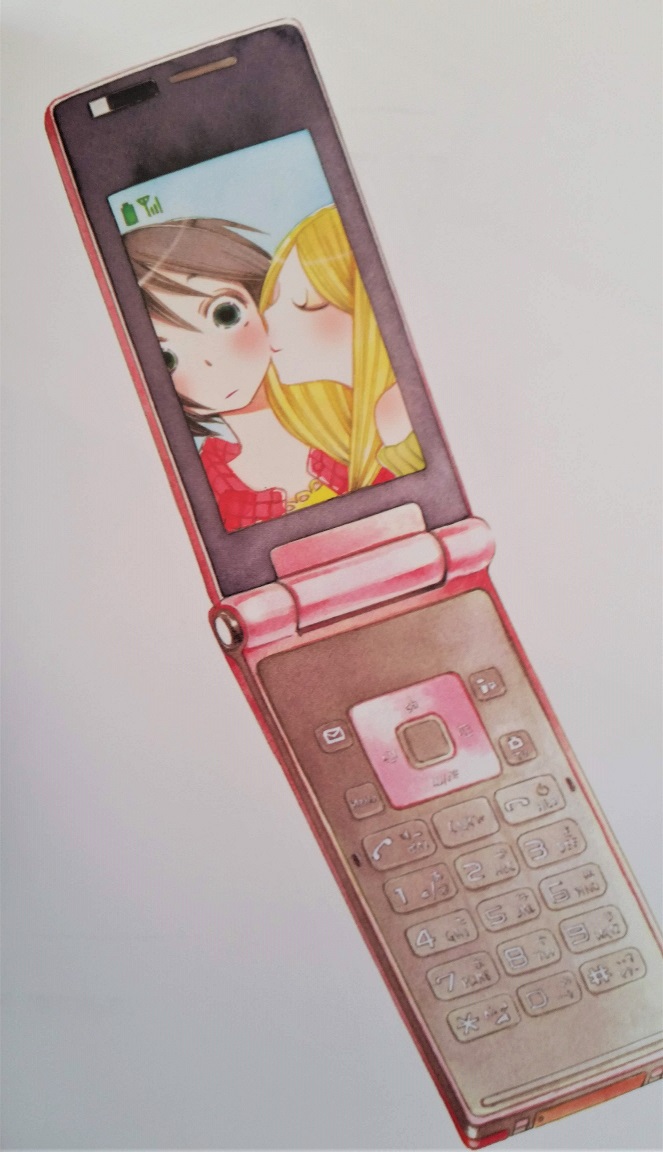
Maiden Railways, by Asumiko Nakamura — published by Denpa
This is the first of Denpa’s offerings that I’ve gotten a chance to read, and it’s the one I was most looking forward to. I love Asumiko Nakamura. Her art is so strange, both adorable and almost uncomfortable with all its sharp angles and long limbs. This volume is an anthology of railway-themed romances. It is simple and straightforward in many ways, but as with all of Nakamura’s work, it sets a very distinct tone, in this case of hope and longing and compassion. It’s a really lovely little collection with some lesbian themes neatly tucked into it with no fuss. Between this and Seven Seas’s upcoming print version of Classmates coming out soon, I am thrilled that more readers have access to Nakamura’s work.

Bloom, by Kevin Panetta and Savanna Ganucheau — published by FirstSecond
I had to wait for this book from the library for months, and I absolutely understand why — it’s absurdly charming. Ari’s dream is to move to the city with his band, but he can’t seem to escape his responsibilities at his family’s bakery. Hector, a culinary school student, has come to town to pack up his deceased grandmother’s home. Ari hires Hector to help in the bakery, in the hopes that by replacing himself, he will leave his parents no room to argue about his leaving home. But over the course of the summer, Ari and Hector grow close, and they have to make some big decisions about where their lives are headed, and whether those lives include each other. This book was so unbearably sweet, and so beautifully illustrated. Savanna Ganucheau does an excellent job of showing everyday examples of sexiness — nothing exploitative, but the little kinds of things that a person appreciates in their partner, like how they look when they’re focused, or how they move when they’re excited. With a cast diverse in both ethnic background and body type, and a strong, happy queer narrative, this is an incredibly delightful read for teens and up.
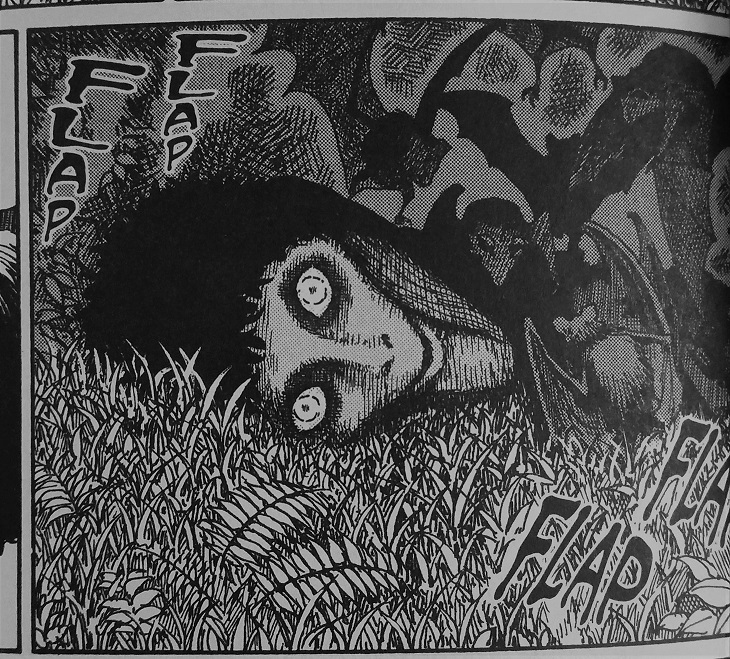
Smashed, by Junji Ito — published by VIZ Media
It’s no secret that I’m a HUGE Junji Ito fan. (That’s part of the reason I’m so excited about TCAF!) I never know what to expect with each new anthology: Will I be scared? Will I laugh? Will I feel like I just watched a particularly poignant episode of The Twilight Zone? For me, this collection had a lot of humor in it, and that is perhaps one of my favorite things about Ito’s work. There is a very fine line between comedy and horror, and no one loves to hop back and forth across that line as much as Ito. I think my favorites in this collection were “Bloodsucking Darkness” (because I love bats), “Soichi’s Beloved Pet” (because I love cats), and “Library Vision” (because I love books). The linked Soichi stories never fail to be silly fun, and as usual Ito’s artwork throughout the whole anthology is gorgeous and detailed. Truly, he is a master of horror, and all other kinds of base human emotions.
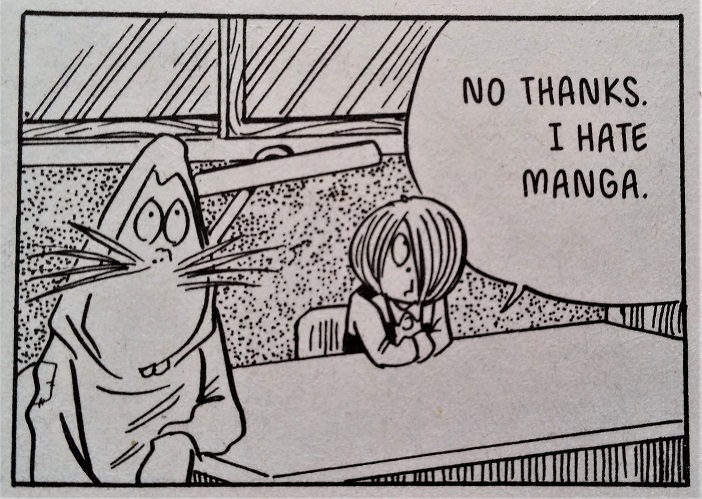
Kitaro’s Yokai Battles, by Shigeru Mizuki — published by Drawn & Quarterly
It’s been so long since there was another installment of Kitaro, and I was thrilled when I was alerted to this making its way into my pull at Comicopia. Who on this earth doesn’t love adorable, weird, childish monsters with potty humor? Only boring people, that’s who! In this collection, I was particularly fond of the “Oboro Guruma” chapter, in which Shigeru Mizuki has inserted himself as a major character, plagued by yokai who are taking over his home as their base of operations. As usual, Mizuki’s cartoony characters sit atop his lush and gorgeous backgrounds seamlessly, and the oft-times odd solutions to yokai-related problems harken back to simpler times and simpler story-telling mechanics. With each volume comes another installment of translator Zack Davisson’s “History of Kitaro,” which really appeals to my interest in both general world history and manga history specifically. A fun read suitable for just about anyone who appreciates a little dark whimsy in their life.
That’s going to do it for this month! I made the conscious decision not to include the sixth volume of Tokyo Tarareba Girls this time around, even though it’s one of my absolute favorite series, because I’ve already written about it in the past, and I anticipate I will talk at great length about it in many forms in the future. I thought I’d spare you all, haha.
I already have a huge pile of comics waiting to be read (don’t I always?), so hopefully I’ll have a nice round-up for May, as well. Happy reading!
February Favorites
Time for something new! I’m going to start trying to round up some of my favorite comic reads at the end of each month. These won’t necessarily be things that came out the month in question (though I do try to keep up when I can), but anything I’ve managed to get my hands on that I feel is worth a mention. I read a lot, so I’m going to have to figure out how to limit my choices, but hopefully with time will come clarity!
I will say, first off, that this has been an…interesting month. I still feel so new to the freelance writing world, but I do think that things are coming together nicely, and I’m getting to a point where I can start challenging myself with how much work I take on. I also lost my cat, Mia, on February 12th. She was quite old, and her decline was very rapid. While she was sick, I spent a good deal of my time attending to her; after her death, there was a lot of time where I was just too miserable to feel like I wanted to do much of anything, let alone read. Still, a visit to Comicopia did help lift my spirits considerably, and while I have to be a little bit more judicious in my purchases right now, I was able to bring home some good new material.
I am also about to spend five days with my family while James is away on business, which is why I’m getting this out before the true end of the month. I suspect I will be too busy doing things with my mom and trying to keep up with my writing work to read too many more comics. But I wanted to give this segment a try, anyway, so I’ve decided to work with what I’ve got.
So without further ado, my picks for the month!
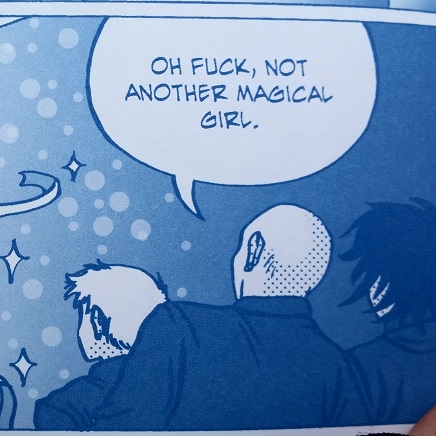
Magical Beatdown, Volume 1, by Jenn Woodall — published by Silver Sprocket
This slim little issue does one of my favorite things: It combines a love of the ultra-femme concept of the magical girl and mixes it generously with a hyper-violence that is both gross and cathartic at the same time. I think there’s a lot to be said about women enjoying and creating violent content, and some day I hope to talk about it more in-depth. But for now, I want to recommend the excellent pastel gore-fest revenge fantasy that is Magical Beatdown, because sometimes you just wanna go to the arcade without having to deal with losers! I’m looking forward to getting my hands on the second installment.

House of Penance, by Peter J. Tomasi, Ian Bertram, and Dave Stewart — published by Dark Horse Comics
Speaking of gore-fests, this standalone graphic novel is not for the faint of heart or stomach. The Winchester mansion in San Jose, California, is famous for it’s staircases that lead to nowhere, its doors that open onto nothing but air, and the nagging suspicion that it is not entirely empty. House of Penance is an exploration of Sarah Winchester’s mental state as she commissions the building of this strange domicile while grappling with the grief of losing her daughter and her husband, and the guilt of inheriting the wealth from a company whose business is murder. I’m always down for a strong anti-gun message, personally, and there is no holding back here as Sarah is confronted relentlessly by the victims of her in-laws’ firearm empire. Ian Bertram’s art is eerie and textured, Sarah especially portrayed with bug-like eyes that can see more than the men working around her. Dave Stewart’s incredible colors compliment Bertram’s lines beautifully, and his use of bright, vibrant blood red is very effective.
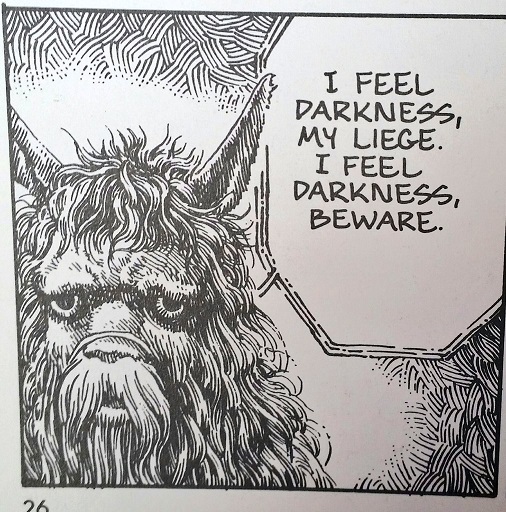
Shion: Blade of the Minstrel, by Yu Kinutani — published by VIZ Media (out of print)
I came upon this volume completely by accident, while I was still working at Comicopia. It was hidden away in storage, in a long box full of old single issue comics, many of which were single issue manga, from way back when everything was flipped and companies tried selling manga like Western single-issue comics. I was drawn to its striking cover and detailed artwork, so I brought it home. That had to have been nearly two years ago, as I had put it into a comic box and promptly forgotten it. I dug it out recently while I was doing some organizing, and I resolved to finally read it.
And honestly, I was stunned. This little volume is so extraordinarily different from any manga that is being licensed and published today. It wouldn’t be seen as marketable, probably, but I’m so glad that VIZ took a chance on it back in 1991, because it was a pleasure to read. The book is split into two stories that follow a mysterious minstrel who must first take his revenge on a monster who wronged him and his family, and then must take up a legendary sword to fulfill his destiny. That one sentence seems like straightforward fantasy, and in many ways that’s what Shion is; as an essay at the back of the volume explains, it is a classic hero arc seen in many fairy tales and epics. But it’s so gorgeously textured in its artwork, and for me it invoked the same feelings as Vampire Hunter D and classic Jim Henson works, especially The Dark Crystal. It’s creative and beautiful, and I’d love to see what Kinutani did after this work. Worth hunting down if you are able!

My Solo Exchange Diary, Volume 2, by Nagata Kabi — published by Seven Seas Entertainment
In many ways, there’s not much I can say that I haven’t said before, in various spaces, about Nagata Kabi’s autobiographical work. Of the three volumes she has out from Seven Seas right now, I think this one was my favorite, even though much of it was spent talking about her time in the hospital. I appreciate, more than ever, her honesty, especially as she realizes how her mental state had prevented her from understanding how much her family actually loves her and wants what’s best for her. She continues to struggle throughout the volume, but it is evident that she’s repairing her relationships and learning, slowly, how to better communicate her pain so that she’s not suffering alone. I know that many people have been critical of her constant self-destruction, but to that end I just have to say…it is evident those people have never struggled with serious mental illness, or really known anyone who has. What Kabi is going through is not logical, it is not easily navigated, and her honesty and willingness to expose herself like she this has surely had a positive effect on others who have felt similarly isolated, self-destructive, and hurt. I continue to send her only the kindest, gentlest, most positive thoughts as she works on overcoming her pain. It’s a hard road, and she’s been working at it for a long, long time. I hope she’s able to find some peace soon.
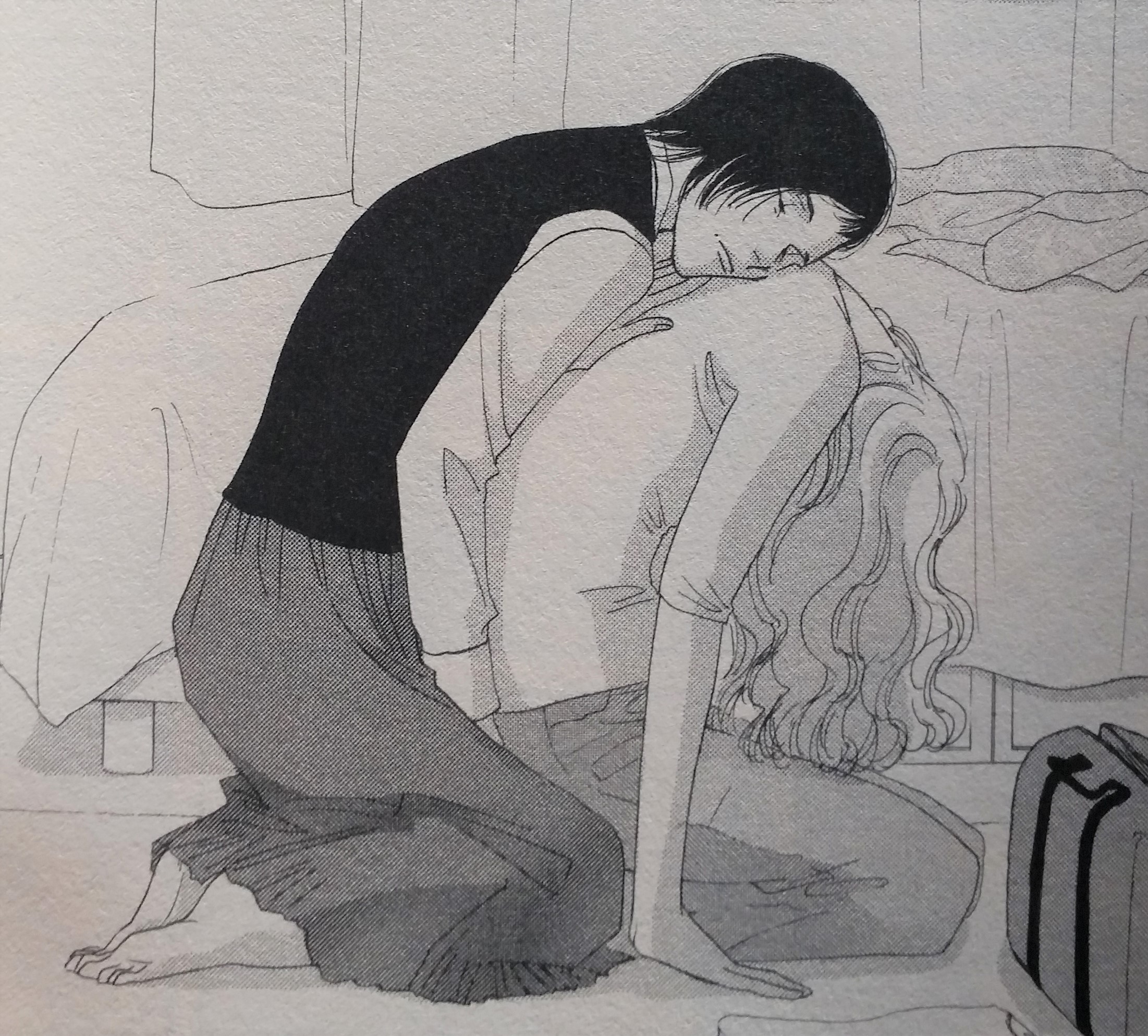
All My Darling Daughters, by Fumi Yoshinaga — published by VIZ Media
Fumi Yoshinaga is one of those creators whose work I always know I’ll enjoy, but who also manages to completely exceed my expectations every single time. So was the case with All My Darling Daughters, a standalone volume that explores various relationships between people in a friend group, with special emphasis on the one between Yukiko and her mother, Mari, who has married a much younger man. Yoshinaga has such a sensitive touch with her characters that I find myself sympathizing even with those who in a different author’s hands, I would absolutely hate. It is an incredible skill to express the nuances of humanity, and Yoshinaga is extraordinarily good at it. I felt especially drawn to the last story in the collection, which dives into Mari’s antagonistic relationship with her own mother (Yukiko’s grandmother). Mari hates her mother for having been unnecessarily cruel about her appearance while she was growing up, not realizing that her mother was trying, in her own imperfect way, to protect her daughter from becoming reliant on her good looks. I was so strongly reminded of the dynamics between the women in my own family, the dynamics between my mother and my grandmother, and the increased awareness I have lately of how heavy motherhood can be. “A mother is an imperfect woman,” Yukiko realizes, and it is a perfect underscore to a book full of imperfect people who are just trying to do the right thing.
Looking back, it seems I’ve read a lot of very different books this month, but there are certain themes that run throughout. A lot of introspection, explorations of mental health (both real and fictional), and a little bit of violence and some adventure to balance things out. I like the micro-review format because I can fit several recommendations into a post at once, and I am not liable to give too much away. I hope this proves useful, and I look forward to following up again next month with some more excellent reads!
My Favorite Reads of 2018
It’s that time of year again, where every single nerd news site tells you what the best-of-the-best comics of the year are. I’m always wary of trying to make blanket statements about literature, but I did want to share a few of my favorites from this past year. I’ve done a LOT of reading, and I feel as though I’ve branched out more than usual (or more like, there have been more titles in Western comics that have appealed to me than there have been in the past).
I didn’t give myself a limit to the number of books I chose, nor any kind of guideline as to theme, tone, etc. I just picked the ones I felt strongly about! These are listed in roughly the order I read them in, and by no means in order of quality. They’re all top-notch, anyway!
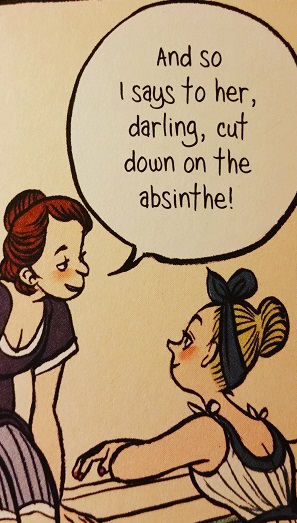
The Prince and the Dressmaker, by Jen Wang
Prince Sebastian has a BIG secret: sometimes he likes to wear dresses and go out on the town as Lady Crystallia. In addition to keeping this part of himself hidden from Parisian society, he has to deal with his parents determinedly seeking out a bride for him. Enter Frances, an extremely skilled seamstress with dreams of fashion design whom Sebastian employs to outfit him for all occasions, public and secret. The story of these two growing together and learning to be their best selves is captured incredibly in Wang’s bright, flowing artwork. Plenty of humor helps to balance out the heart-rending moments that remind the reader to never lose sight of the things that make them unique.
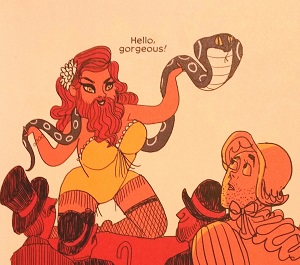
Brazen: Rebel Ladies Who Rocked the World, by Pénélope Bagieu
I genuinely did not expect to adore this book as much as I do. I’m not well-versed in the non-fiction graphic novel, and I’m often suspicious of cheery, pink-emblazoned “girl power” books — not because I don’t believe in girl power, but because it’s hard to encapsulate in one book what it is about womanhood that is so unique. That said, I was truly fascinated and enthralled by the stories that Bagieu, in her whimsical style, has presented in this hefty tome of awesome and awe-inspiring women. Women from all backgrounds, in all types of careers, with differing needs and goals, and with all sorts of romantic entanglements and personal dramas, are presented for the reader with reverence, joy, and good humor.
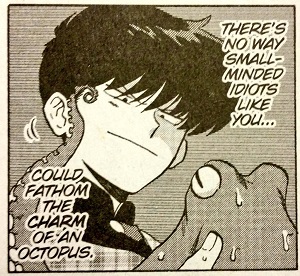
Go For It, Nakamura!, by Syundei
I have been seriously reveling in the increased publication of good, sweet, not-super-fetishistic BL manga this past year or so. In this exquisite example, young Nakamura knows for sure that he’s gay, and also knows for sure that he’s in love with his classmate, Hirose. The problem is, he doesn’t even know how to become friends with Hirose, never mind try to ask him out! Between caring for his pet octopus, perusing questionable BL for romance tips, and just generally trying not to act overly weird, will our stalwart hero ever secure Hirose’s friendship? A familiar story for anyone who was shy in high school, Go For It, Nakamura! uses awkwardness, hilarity, and genuine heart to create a sweet and fuzzy one-shot that will make you yearn for more. Syundei’s artwork is adorable, and very reminiscent of that of manga powerhouse Rumiko Takahashi.
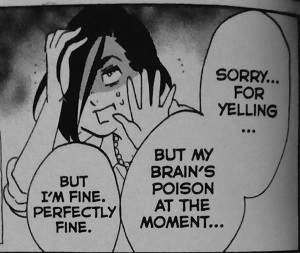
Tokyo Tarareba Girls, by Akiko Higashimura
I wrote about my initial reaction to volume one of Akiko Higashimura’s forays into 30-something woman angst back when the print version first came out. The series is now three print volumes in (with all volumes available digitally), and it has not stopped being maybe the most anticipated title in my pull at work. Higashimura’s ability to poke fun at the stupidity of a woman’s society-bred anxieties while treating the same character with sympathy and understanding is so incredible to me. I often find it hard to articulate what it is that makes this series so good, because it’s really everything. Please…I don’t often make demands, but read Tokyo Tarareba Girls.
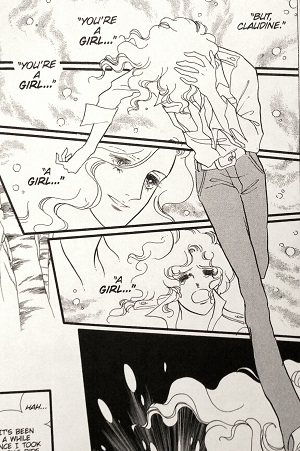
Claudine, by Riyoko Ikeda
I find this manga hard to recommend, even though I love it. It is a quick read; I read it from start to finish on my half-hour bus ride home from work one day. But it is also a dramatic and sad read, in true 70s shojo fashion. Our protagonist Claudine is assigned female at birth, but knows in his heart that he is a man. Even his own father embraces Claudine as more of a son than a daughter, going riding with him and treating him like his older brothers. Society in early 20th century France, however, is not as kind. To the rest of the world, Claudine is a girl, and the tragedy here lies in the outmoded concept that any woman he might love will never lead a fulfilled life with a “woman” partner. So in many ways, this is a fantastic achievement, being a trans story from 70s Japan; but it is also a story about a trans man from the perspective of a cisgender woman, writing at a time when shojo manga was about deep, dramatic personal struggles and utilizing queerness as a vehicle for those struggles. If you can go into it with the understanding that it is a sad story (and yes, I did cry on that fateful bus ride home), it is a simply gorgeous and heartbreaking work of tragedy.
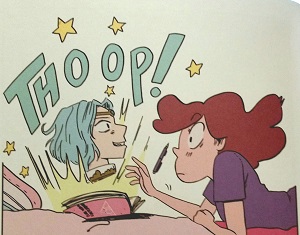
Making Friends, by Kristen Gudsnuk
I’ve been in love with Kristen Gudsnuk’s work ever since I read the first issue of Henchgirl, back when it was released by Scout Comics. Her artwork is fun, her dialogue is funny, and she makes plenty of obvious anime references that I feel are speaking directly to me and my sense of humor. So of course I was thrilled when Making Friends came out, and I was not disappointed. Protagonist Dany is starting middle school, where she is separated from her friends and everything that was familiar to her. She turns inward and begins to draw in the sketchbook she recently inherited from her recently deceased great-aunt. Soon she discovers that anything she draws in the sketchbook — including the head of her favorite anime badboy — comes to life! She quickly devises a plan to create a new, perfect best friend. But as we all know, magic has serious consequences, and Dany is going to have to figure out how to fix the mess she’s made. Gudsnuk does an excellent job of keeping this story about friendship and responsibility from becoming saccharine or tropey, instead treating every character with equal weight and relying on her uncanny knack for coming at a story from a slightly sideways perspective.
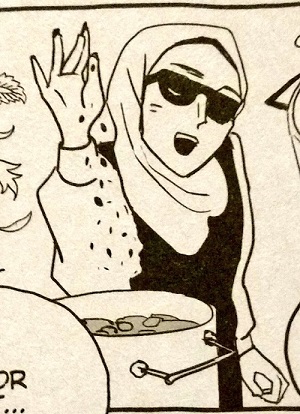
Satoko and Nada, by Yupechika and Marie Nishimori
This was absolutely one of my most anticipated titles of the year, and man oh man did it hit a home run for me. Upon initially receiving it I was uncertain, as it is laid out in 4-koma format, which I usually find cute but not particularly compelling. And yet in this easy gag style, with simple illustrations, Satoko and Nada manages to be a profoundly intimate story of friendship between women and across cultures. Nada is a college student from Saudi Arabia who is looking for a roommate. Satoko, a student in the same school, has recently arrived from Japan and chooses to become that needed roommate. Thus begins this tale of two people from very different backgrounds as they live together and learn all about each other and about their multicultural friends. Warm-hearted, informative, and full of meme references, this manga really surprised me in the best possible way. I want everyone to read it!
(Just an honorable mention here: I reread two of my absolute favorite series this year: Pet Shop of Horrors, by Matsuri Akino, and The Wallflower, by Tomoko Hayakawa. One day, I’d like to write at length about both of these series, but as they’re old and hard to find, I opted against adding them to this list. Look forward to an analysis of them one day, because I am very attached to them both!)
As you can see, I read a lot of very heartwarming stories by or about women this year. I have been immensely impressed by the range in stories and creators I’ve had access to, and that’s something I want to see continue to grow year by year. My reading list has been a bright spot in what has been a very tumultuous year otherwise (personally and in the world at large), and it gives me hope that more differing voices are being tapped to tell more and varied stories.
Looking forward to reading more in 2019!
Eisner Follow-Up & Podcast Announcement
As I’m sure amny of you remember, when voting for the Eisner Awards opened up, I had some complaints about the manga nominees — not because they weren’t worthy, but because I didn’t think they really reflected what manga readers cared most about. I stand by everything I said in that post; I think a lot of improvements need to be made in regards to manga’s position in the Western comics world. However, on the whole I have to say that I’m very pleased with the results of the award ceremony.
Gengoroh Tagame’s My Brother’s Husband won the “Best Adaptation of International Material – Asia” category…and while all the nominees were outstanding in their own ways, I think this is the book I most wanted to win. (I didn’t vote for it; I wrote in Nagata Kabi’s My Lesbian Experience With Loneliness, but I knew that winning would have been a long shot.) It’s not necessarily my favorite manga in the nominee lineup (I’m an enormous Junji Ito fan, so Shiver would probably claim that role), but I do think it is the most important, and the most indicative of a shift in the comics-reading demographic. Which is to say, queer folks have always been reading and making comics, and it’s nice to see that acknowledged.
In fact, many queer folks, women, and creators of color were acknowledged at this year’s award ceremony. I won”t go too deep into the non-manga awards here, but I was extremely pleased to see a lot of my favorite creators and books given the acknowledgement I never dreamed the comics industry would provide. I’ve never been happier to be proven wrong.
The Akira boxset won two awards, as well! Readers will probably note from my last post that I have a boxset of my very own, and I can’t possibly overstate how incredibly beautiful its presentation is. I don’t always agree with Kodansha’s printing choices (about half of their titles are oversize right now, which makes them hell to shelve), but this is one notable time where they did no wrong. I’m glad to see that it’s been in high enough demand that it’s gone to second print!
I think, though, that the highlight for me was to see Rumiko Takahashi, the most successful and one of the most influential women in comics, finally inducted into the Eisner Hall of Fame. As Deb Aoki, comics critic extraordinaire (@debaoki on Twitter!), mentioned: having some random American award probably isn’t that big a deal to Takahashi, a woman already festooned with awards, accolades, and a great deal of ongoing market value. But it is an important step for the often very Euro-centric or otherwise cloistered Western comics community to honor a mangaka — and a woman mangaka, at that. That she was a write-in winner warms my heart immensely. It’s exciting to note that Viz Media just announced they’ll be reprinting Urusei Yatsura, as well, so now a new generaton of fans can be similarly inspired by some of Takahashi’s early work!
Eisner stuff aside, I also wanted to mention that later today I’ll be recording content for the 200th episode of the Manga Machinations podcast! They approached me a couple months ago asking if I’d be willing to join them, and it’s been a lot of fun chatting back and forth and listening to some of their past work. They have had the opportunity to host translator Jocelyne Allen twice, and I highly recommend listening to those episodes if you haven’t already. You can find Manga Machinations on Twitter (@MangaMacPodcast) and on Tumblr (mangamachinations.tumblr.com). The 200th episode goes up tomorrow, Monday, July 23rd. I hope you’ll give it a listen; you’ll get a little bit of background about me, my job, and my feelings about josei and LGBTQ+ manga!
Eisner Follow-Up & Podcast Announcement
As I’m sure amny of you remember, when voting for the Eisner Awards opened up, I had some complaints about the manga nominees — not because they weren’t worthy, but because I didn’t think they really reflected what manga readers cared most about. I stand by everything I said in that post; I think a lot of improvements need to be made in regards to manga’s position in the Western comics world. However, on the whole I have to say that I’m very pleased with the results of the award ceremony.
Gengoroh Tagame’s My Brother’s Husband won the “Best Adaptation of International Material – Asia” category…and while all the nominees were outstanding in their own ways, I think this is the book I most wanted to win. (I didn’t vote for it; I wrote in Nagata Kabi’s My Lesbian Experience With Loneliness, but I knew that winning would have been a long shot.) It’s not necessarily my favorite manga in the nominee lineup (I’m an enormous Junji Ito fan, so Shiver would probably claim that role), but I do think it is the most important, and the most indicative of a shift in the comics-reading demographic. Which is to say, queer folks have always been reading and making comics, and it’s nice to see that acknowledged.
In fact, many queer folks, women, and creators of color were acknowledged at this year’s award ceremony. I won”t go too deep into the non-manga awards here, but I was extremely pleased to see a lot of my favorite creators and books given the acknowledgement I never dreamed the comics industry would provide. I’ve never been happier to be proven wrong.
The Akira boxset won two awards, as well! Readers will probably note from my last post that I have a boxset of my very own, and I can’t possibly overstate how incredibly beautiful its presentation is. I don’t always agree with Kodansha’s printing choices (about half of their titles are oversize right now, which makes them hell to shelve), but this is one notable time where they did no wrong. I’m glad to see that it’s been in high enough demand that it’s gone to second print!
I think, though, that the highlight for me was to see Rumiko Takahashi, the most successful and one of the most influential women in comics, finally inducted into the Eisner Hall of Fame. As Deb Aoki, comics critic extraordinaire (@debaoki on Twitter!), mentioned: having some random American award probably isn’t that big a deal to Takahashi, a woman already festooned with awards, accolades, and a great deal of ongoing market value. But it is an important step for the often very Euro-centric or otherwise cloistered Western comics community to honor a mangaka — and a woman mangaka, at that. That she was a write-in winner warms my heart immensely. It’s exciting to note that Viz Media just announced they’ll be reprinting Urusei Yatsura, as well, so now a new generaton of fans can be similarly inspired by some of Takahashi’s early work!
Eisner stuff aside, I also wanted to mention that later today I’ll be recording content for the 200th episode of the Manga Machinations podcast! They approached me a couple months ago asking if I’d be willing to join them, and it’s been a lot of fun chatting back and forth and listening to some of their past work. They have had the opportunity to host translator Jocelyne Allen twice, and I highly recommend listening to those episodes if you haven’t already. You can find Manga Machinations on Twitter (@MangaMacPodcast) and on Tumblr (mangamachinations.tumblr.com). The 200th episode goes up tomorrow, Monday, July 23rd. I hope you’ll give it a listen; you’ll get a little bit of background about me, my job, and my feelings about josei and LGBTQ+ manga!
Pride and the Manga Market
Happy Pride! I spent yesterday dolled up as Loki, marching with various other Avengers as a part of Boston’s Pride Parade. It’s something we’ve been doing at Comicopia for the last decade now, though this is only my second time going, personally.
Marching in Pride is pretty tiring, but being there reminds me of why this kind of visibility is important for the queer community — of Boston, and of the world as a whole. I marched and screamed and smiled while hoisting the bisexual pride flag high, and I locked eyes with a small child wrapped in their very own bi pride flag. Another little one ran right out and gave me a hug, and countless people cheered as they saw me: visible and queer and there to celebrate myself and them.
But queerness isn’t visible everywhere, or at all times. It’s not allowed to be part of so much of mainstream culture, even now in 2018. In the comics world, however, it’s steadily on the rise. I have kind of accidentally read a lot of gay material this year; and while the content and quality vary greatly, that’s not something I could have said a scant five years ago.
I feel as though I can hardly scroll through my Twitter feed without someone bringing up My Lesbian Experience With Loneliness, and I’m glad of it! It’s sequel recently came out, the first part of My Solo Exchange Diary. And Seven Seas has also released The Bride Was A Boy, which I have already covered; soon, they will also have released Riyoko Ikeda’s Claudine, about a transman living in 19th century France.
The yuri market seems to be expanding as well, and though Seven Seas has often taken the lead in that genre, we’re seeing Viz Media throwing their hat in the ring with titles like After Hours and Sweet Blue Flowers. And they’re going to be publishing some BL too (or perhaps the term shonen ai would be more appropriate in this context), under their normal Viz moniker, not their SuBLime imprint: That Blue Sky Feeling, coming out in August.
Volume one of Gengoroh Tagame’s My Brother’s Husband came out last year, and we’re expecting its sequel in the early fall. Fantagraphics recently reprinted the Massive bara anthology, which is excellent for us because…honestly, we sell a ton of Tagame and bara in general! I know that’s probably not typical, I can’t completely fathom why we’re able to move it the way that we do.
I haven’t even gotten to talking about non-manga comics, with publishers like Boom Studios and Oni Press taking the lead in queer material, especially queer material for young audiences. And a lot of those gay young people books? It’s clear that they’ve been influenced by anime and manga.
So. What does this all mean? I would surmise that someone somewhere has realized that queer content is marketable. For a long time, that market seemed to be fujoshi scrambling for yaoi, but the tides are turning a little bit. A lot of those fujoshi have explored their own sexuality or identity and found themselves identifying as something other than straight or cisgender. They’ve been joined by fudanshi, perhaps. Or maybe the strange nature of animanga has made readers flexible to ideas outside of their norm.
I can’t say, of course, that that’s how things have progressed. But I can say that for me, the animanga community has always been very…well, gay. I had a conversation with someone about the local Massachusetts Independent Comics Expo (MICE) recently, and when I said I loved it because it felt like one big artist’s alley, he responded that it seemed much queerer than any artist’s alley at any con he had ever been to. And that’s when it hit me — the comic book conventions cater to a completely different crowd than the anime conventions. I mean, obviously, right? But not just in content; in age and economic standing and social status…in every way imaginable.
We’ve graduated from the yaoi paddles of my adolescence, thank God, but I can’t spit at Anime Boston without hitting a kid wearing a YAOI-emblazoned snapback. I sell out of My Lesbian Experience With Loneliness and I Hear the Sunspot on a regular basis at the store, and still sell them with lightning speed at shows. I see pronoun pins on shoppers almost as often as I see character goods.
And some enterprising person (or people), perhaps queer themselves, has discovered that there is a whole group of people out there whose media is under-serving them on a daily basis. And so they’re filling that niche. That sounds cynical, and clinical, I guess, but it’s really a wonderful thing.
The first Pride march was a riot; the current Pride parades have corporate sponsorship. The nature of achieving progress in our society, as it currently stands, seems to necessitate becoming a “commercial success,” so to speak. I don’t love the coupling of business and marketing with identity; I hate the fact that my Pride marshal badge both this year and last proudly proclaimed the name of a bank sponsor. I don’t trust corporations to do better just because they choose to align themselves with a hot topic like feminism or gay rights or whatever.
But…I feel differently about the world of publishing. It’s naiive, perhaps, and maybe it’s because I know people who work in publishing that I’m able to hold on to this hope. Comics as an industry is a mess, but I want to see myself and my queer siblings as the heroes of our own stories. I want to trust that these license agreements are coming not solely from a sales point of view, but from a desire to help bolster visibility.
And while the queer stories themselves are a boon, I want to see a growing trend of stories by queer creators. I think that’s the most important way to show support — to give a voice to those who for so long have been voiceless. To allow those creators to feel safe, and listened to, and proud.
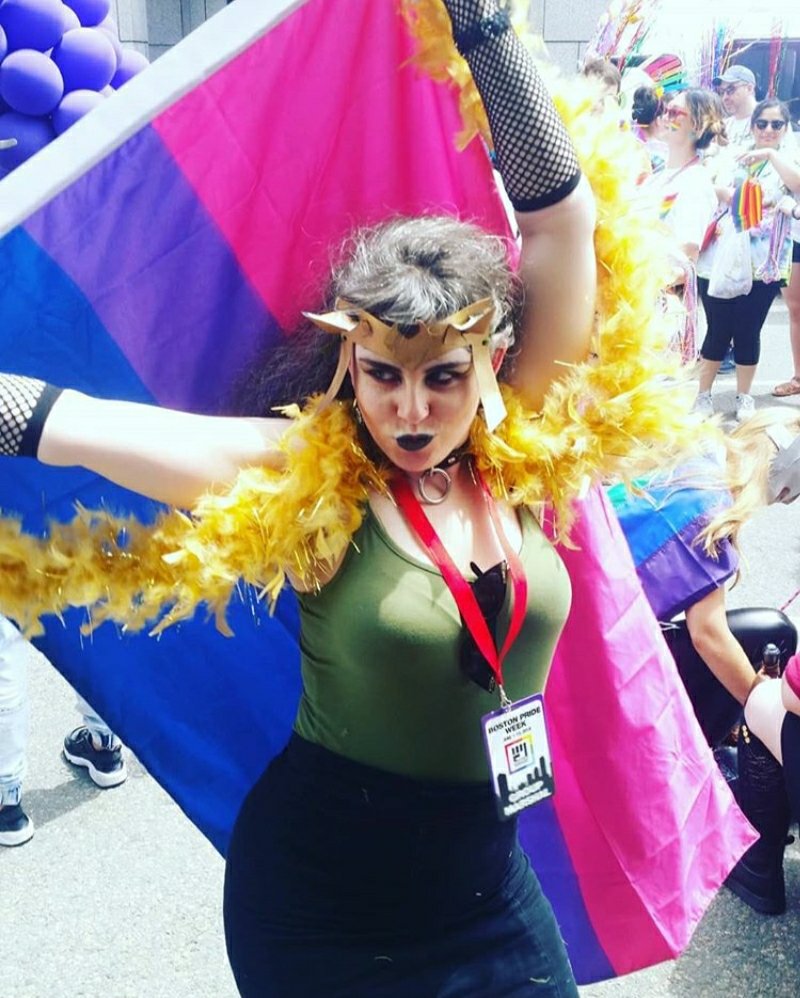
The Bride Was A Boy, and Empathy Through Comics
I want to start off this post by acknowledging that this week has been a deeply ambivalent one in the comics world. The two-thirds of my Twitter feed that aren’t dedicated to anime memes and cute animals were split with coverage of recent Comicsg*te abuses and coverage of the Toronto Comic Arts Festival — namely, the worst and the best that the comics world has to offer, respectively.
I don’t want to dedicate too much time to discussion of the former issue for various reasons, but not least of all because in light of efforts to push certain people out of comics, I find my desire to uplift the voices of those people becomes stronger. And so, I’m going to have a go at my first official review here, of The Bride Was A Boy, by a woman who goes simply by the name of “Chii.”
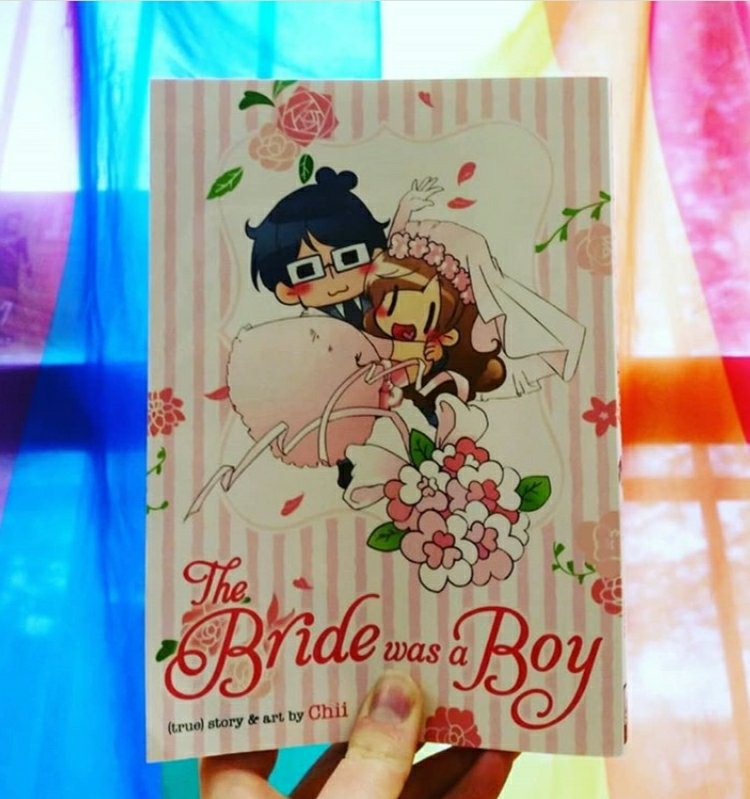
When Seven Seas Entertainment published My Lesbian Experience With Loneliness, they struck gold; I’ve discussed before in various venues the great pull of that book, among manga readers and non-manga readers alike. There was a great need for this — an autobiographical manga about queerness and depression that allowed readers to either relate, or to empathize and find common ground. It was very smart, then, for Seven Seas to pick up The Bride Was A Boy, because I feel that autobiographical trans narratives are even more necessary in many ways.
Though the manga is billed as being about preparation for Chii’s wedding, in reality it is the discussion of Chii’s journey through womanhood, from her discovery of being trans to her decision to go through with sex reassignment surgery and becoming legally “female.” Throughout this journey, she has a great deal of support from her family and her soon-to-be-husband (whom she alternately refers to as “Boyfriend-kun” and “Husband-kun”). Between chapters, Chii takes the time to break down some terms and laws that people outside of the LGBT+ community might not be familiar with. They are simple explanations, but they are a good basic primer for anyone who is just starting their journey into trans issues.
I honestly wasn’t sure if I’d like this manga — not because of the subject matter, but because of its presentation. It’s laid out in 4-koma style, which doesn’t typically appeal to me, and the artwork is simple, adorable chibi-style characters. It hardly seems like it has the same underground, confessional feeling of MLEWL. Though I was excited that a trans story was being published, I worried that it was Seven Seas scrambling to ride the high of MLEWL‘s success without regard for the subject matter itself. I found, however, that I truly loved it.
There has allegedly been some criticism that The Bride Was A Boy is too positive; again, Chii is very lucky to have a very supportive and loving family and partner, which may seem like a distant reality to many trans folks. But I think that a positive, autobiographical trans narrative is very important. It is not the job of trans people to constantly struggle for the benefit (and entertainment) of others. Presenting trans womanhood in this way offers it very simply as just another kind of lived reality. It is my fondest wish that cisgender people will pick up this book and maybe come to learn new things about trans people, or come to understand the feelings of trans people better. And I also hope that readers then continue to demand more trans stories, both fictional and non-fictional, that are earnest, entertaining, and which ultimately help to cultivate a culture of empathy. (For this reason, I’m particularly fond of the intermittent breakdowns of terminology and law, and want to acknowledge Beni Axia Conrad for the extra work they must have done to translate these pieces to reflect both Japanese society and relate them to what English-speaking readers might expect in their own societies.)
I’m idealistic, I know. The comics community has more excellent content from queer creators, creators of color, and women creators than ever before, yet we’re seeing an incredible amount of backlash from the unhappy few who continue to do harm, verbally or otherwise, to those already marginalized. I spent much of this week feeling helpless in light of that reality. But reading The Bride Was A Boy reminded me that it has always been my philosophy to use my relative privilege, and my position as someone who reads and recommends comics professionally, to keep people engaged with good work from deserving creators. There will always be people who stand obstinately in the path of progress and understanding, who want their position on the top of the heap to remain unchallenged. But the fact remains that, for many, comics have always been about challenging the status quo, about saying things that the privileged don’t want to hear. It is my hope that comics continue to shake things up and push that status quo even further into oblivion.
With all that said, I happily recommend The Bride Was A Boy to people of all genders as a warm, joyous, informative story about one woman’s journey to manifesting her best life. I would like to see it getting just as much lip service as My Lesbian Experience With Loneliness. May these manga pave the way for the translation of more excellent queer stories!
Bags of BL
Last week, I went to go pick up some manga that a friend was getting rid of — several bags of yaoi, all out of print at this point. There were a lot of treasures in and among them that I hadn’t read yet, plus she tossed in a few extra manga that she had found laying around (including a hardcover copy of Shirahime-Syo, by CLAMP).
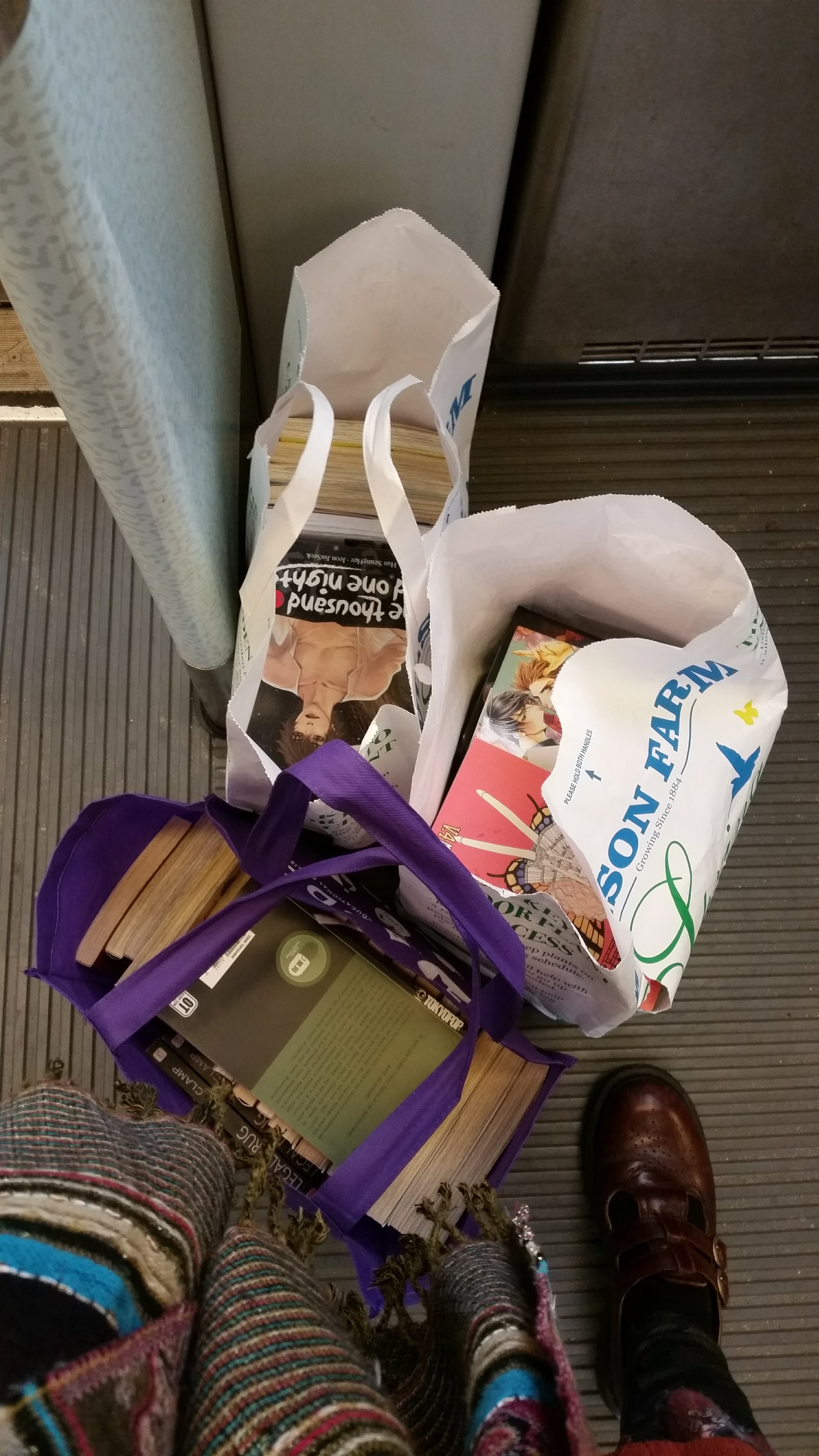
I’ve only had a chance to read two of the manga so far, Same-Cell Organism, by Sumomo Yumeka, and Say Please, by Kano Miyamoto. I enjoyed the former quite a bit; it was a collection of sweet, fluffy BL stories that I would feel comfortable recommending to just about anyone. The latter…well, I’m super exhausted by the domestic abuse tropes in yaoi, and if Say Please had left those out, it might have been perfectly fine. As it was, it was hard to believe in the “five years later” happy romance when I couldn’t stop thinking about the assault that occurred earlier in the story.
I’ve been trying to keep up with yaoi as it’s coming out these days, and I have to say…there are still a lot of problems, still a lot of harmful tropes. But on the whole, it seems as though there’s a bit more vetting going on of material that could be considered offensive or harmful. It’s been nice to see titles like Yuki Fumino’s I Hear the Sunspot get their English debut; stories that aren’t centered around sex, but around creating bonds and falling in love are more gratifying for me than straight-up porn. Even some of the saucier titles have been a real treat, though! I really enjoyed Scarlet Beriko’s Jackass, which could have so easily fallen prey to any number of horrible tropes. I’ll admit, as I was reading it, I was trying to predict how long it would take before I became thoroughly disappointed in my choice of reading material. Glad to say that disappointment never came!
I know that rummaging through the backlog of out of print DMP yaoi is going to be…challenging. I suspect there was a sort of “we’ll take what we can get” mentality about licensing at the time, and fans were so hungry for whatever they could get their hands on that they were willing to overlook some of the more egregious faults of the BL genre. But North American fujoshi are pickier now, I think. I know I certainly am! But I also think there’s a certain value in me going back and reading through this material I wasn’t able to get my hands on at the time of its publication (either because the places I shopped didn’t carry it, or because I was too young at the time to legally buy it).

I’ve heard Vassalord is…a wacky time.
Even though manga and anime are more popular and accessible now than ever before, there will always be certain series or whole genres that remain under the radar of public consciousness. I think BL is one of those genres; it’s so niche, and can be difficult to navigate. Something like yuri, I think, will continue to grow in popularity because not only will lesbian readers snap it up, but ostensibly straight men will, too, and they will pass it along to their friends and talk it up on social media. (As an aside, I remain pleasantly surprised every time I sell My Lesbian Experience With Loneliness to a man. I always wonder if they know what it is ahead of time, or if they think they’re getting a fun sexybook.) BL will never get that treatment because its main reader base is women, and in my experience women’s opinions on what is sexy are treated as less important. I don’t mean to imply that gay men should feel the need to read BL; Lord knows it’s not generally a great example of actual, genuine homosexual relationships. But BL gets put through the ringer a lot in ways that other media doesn’t, and I can’t help but think that it’s mostly because it’s something that chiefly women read and talk about and bond over.
It is my hope that in the coming years, we’ll see a lot more BL translated into English that appeals to a variety of readers. I get men in the store frequently who want BL but don’t like the painful stereotypes, or who aren’t really interested in porn as much as in gay romance. I’d like to be able to give them more recommendations than just I Hear the Sunspot and His Favorite. And I’d like to see the Western comics world tackle gay male stories, too! There have been a couple good ones lately — Taproot and Generations, both published by Lion Forge, come to mind. Let’s keep the trend rolling!
In the meantime, I’m going to try to wade through all these old books that I had to carry back to the store via the train. Anyone have any remedies for an achy shoulder..?

The resemblance is uncanny!